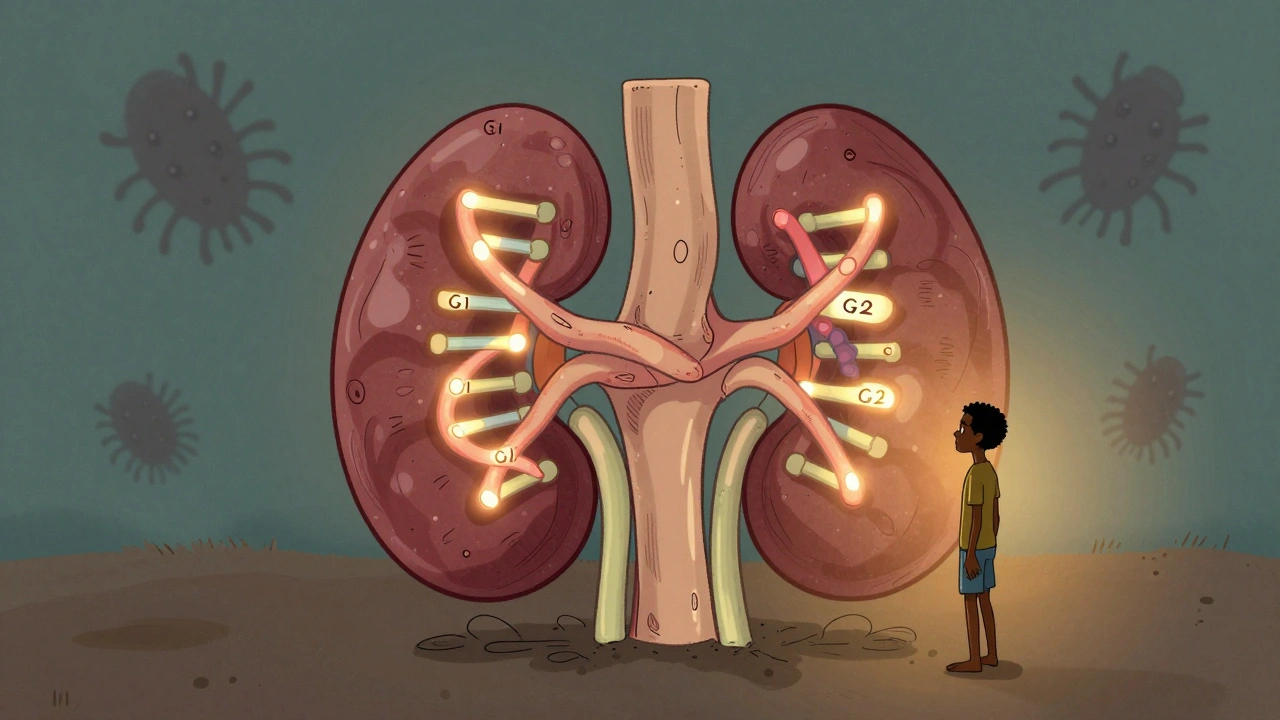When Ovulation Goes Off the Rails: Understanding Anovulation
It’s not something anyone expects to deal with until suddenly you’re looking at procedures, charts, and medication names that sound like Star Trek planets. Anovulation—when your ovaries just don’t release an egg—ends up frustrating a huge slice of women trying to get pregnant. PCOS is the usual suspect, but weight swings, stress, thyroid ups and downs, and even vigorous workouts can mess with your natural rhythms. It impacts about 1 in 10 women at some point, so, if you’re here, yeah, you’re far from alone. But ovulation isn’t all or nothing—the whole system’s got to align, from hormone signals to your body’s stress meter.
Getting the diagnosis can be maddening. Sometimes it takes a few months of tracking cycles, spotting weird periods, or even going months without one. Blood tests for hormones like FSH, LH, estrogen, and prolactin are the norm, and a good doctor will look at thyroid markers and check your ovarian reserves. There’s no single test or one-size solution, and it’s rarely something you just “fix” with supplements and a high-protein breakfast. But knowing what’s going on is the first step before diving into the alphabet soup of medication choices.
Some folks are shocked to learn how common anovulation actually is. One study published in the journal Fertility and Sterility found about 30% of infertility cases in women are linked to ovulation disorders, with PCOS being the biggest slice of that pie. Good news? We’ve got tools to push your system back into gear—at least, most of the time. The big challenge is working out which medical treatment actually lines up with your body and life, rather than following Instagram advice or that one cousin who swore by pineapple core.
But before jumping in, you’re probably wondering: can women with anovulation still get pregnant? The short answer is yes, but it always depends on the cause and how your body responds to kickstarting ovulation. If you want to nerd out on the science or peek at a more detailed guide, the treatment for lack of ovulation resource is a solid place to start and gets even deeper into underlying causes.
If your cycles are all over the place or you’ve heard any variation of “just relax,” trust—there are real, practical steps you can take, and medical options that take you beyond random guessing. With that groundwork, let’s break down the four most talked-about medical treatments for women not ovulating: clomiphene, letrozole, gonadotropins, and IVF. Each has strengths, drawbacks, and wildly different price tags—so knowing the nuts and bolts can spare you months of frustration.
Clomiphene Citrate: The Gateway Drug to Ovulation
If you walk into a fertility clinic asking about anovulation, odds are the first word tossed your way will be clomiphene (often sold as Clomid). It’s been around since the 1960s and is usually step one for a reason: this pill, taken in the early part of your cycle, tricks your brain into sending a wave of ovulation hormones. Suddenly, your ovaries get the "Go!" signal they’ve been ignoring.
Most women with anovulation—especially those with PCOS—will at least respond somewhat to clomiphene. According to data from the American Society for Reproductive Medicine, about 70-80% of women ovulate while taking it. Not bad, right? Out of those who ovulate, roughly 30-40% get pregnant within six cycles. Those numbers drop fast if you have other issues, like blocked tubes or severe endometriosis, but for many women, the stats are pretty encouraging.
Here’s the trade-off: clomiphene makes your ovaries work, but it can thin your uterine lining, making it trickier for an embryo to implant. The risk of twins is higher too, clocking in around 8-10%. For some, that sounds exciting; for others, it’s a logistical nightmare.
Typical protocol is 50mg for five days, usually starting on day 3 or 5 of your cycle, with ultrasound tracking if your doctor’s thorough. Side effects? Think hot flashes, mood swings, blurry vision, and bloating. Nothing dangerous in most cases, but definitely not a walk in the park if you’re sensitive to hormonal ups and downs.
One thing a lot of people miss: clomiphene doesn’t work forever. If you don’t ovulate in the first three tries, doubling the dose is common, but if it fails after six cycles, doctors usually pivot to something else. There’s also something called "clomiphene resistance," especially in women with higher BMI or classic PCOS patterns. If that’s you, don’t beat yourself up—biology doesn't always play fair.
Still, clomiphene holds a pretty sweet spot as the affordable, simple place to start. It’s generic, so it won’t torch your bank account, and you don’t need daily shots—just five pills, some monitoring, and hope that your ovaries answer the call. Insurance usually covers at least part of it, though coverage for ultrasounds can get patchy depending on your location.
One bonus tip: track your ovulation carefully while taking clomiphene to catch your window. Using ovulation predictor kits or regular LH surge tests can save you a lot of relationship stress and guessing games. And if your cycles are longer from PCOS, some doctors recommend starting at a higher dose straight away for better results.

Letrozole: The PCOS Game-Changer
Letrozole (Femara) began its medical life as a breast cancer drug, but it’s become the rising star for women with PCOS who don’t ovulate regularly. Unlike clomiphene, letrozole nudges your ovaries through a totally different hormone pathway—lowering estrogen just enough that your brain releases a rush of ovulation signals. The result? Your follicles get the memo, usually without the same uterine lining side effects as clomiphene.
Researchers noticed women on letrozole for cancer had surprise pregnancies despite low estrogen. That’s where this off-label miracle comes in: According to a detailed clinical trial run by the National Institutes of Health, women with PCOS using letrozole had around a 27.5% live birth rate per cycle, beating clomiphene’s 19.1% in the same trial. For an infertility drug, that’s a pretty serious edge. Another plus: letrozole rarely leads to twins, dropping risk to just around 3-4% (much lower than with clomiphene).
The dosing looks similar to clomiphene—often 2.5 or 5mg, again for five days early in your cycle. Letrozole is also less likely to mess with cervical mucus or your uterine lining, which means better conditions for fertilization and embryo attachment. A big win for anyone tired of "perfect ovulation, but no implantation." Side effects tend to be milder too, but expect some headaches, fatigue, or hot flashes in a smaller dose than clomiphene. Letrozole clears from your system faster, so shorter cycles or less PMS may be a pleasant surprise.
Most insurance covers letrozole for fertility, but you'll want to double-check since its use is technically "off-label." In practice, letrozole is edging out clomiphene as the #1 first-line drug for women with PCOS, particularly if you didn’t respond to clomiphene, or if you want to dodge the higher twin odds. Fertility docs love bringing up a 2014 study from the New England Journal of Medicine as proof: more ovulation, more babies, fewer headaches (figuratively and literally).
For women with unexplained anovulation—not classic PCOS—clomiphene and letrozole tend to be similarly effective. But if your doctor pushes letrozole, roll with it: you may get better lining, fewer hormonal side effects, and a cleaner pregnancy shot because letrozole moves in and out so fast it barely disrupts the rest of your system. Don't be afraid to ask for ultrasound monitoring, especially if you want hard data on how your body’s responding—the more you see those follicles grow, the more control you have over timing and next steps.
One practical heads-up: don’t take these meds indefinitely. If you’re not ovulating after three monthly cycles, push for a different approach. Bodies get stubborn, and sometimes it’s not about the drug—but about what’s blocking ovulation in the first place.
Gonadotropins: Shots Fired (Literally), Success Leveraged
Maybe you’ve burned through pills with no luck, or maybe your hormonal signals are just too faint for oral meds. That’s where gonadotropin injections step in. These are real-deal hormones—FSH, LH, or both. Instead of tricking your brain to signal your ovaries, you’re just sending the signal directly. It’s basically the fast lane for making ovaries behave, but it’s not for the faint of heart or light of wallet.
Pills like clomiphene and letrozole are a little like pressing the gas pedal; gonadotropins are more like taking manual control of the engine. The injections happen daily, usually for 8-12 days depending on response, with blood tests and ultrasounds every few days. Once a mature follicle’s visible, a shot of hCG cues your body to finally ovulate. The process feels intense, but for about 50-70% of women, this step triggers ovulation when the pill route just wasn’t working.
Dive into the numbers, and you’ll see live birth rates per cycle in the 10-20% range—pretty solid, especially considering most cases here are trickier. But here’s why clinics watch so closely: gonadotropins sharply raise the odds of twins or higher-order multiples, clocking in around 25% for twins alone if you’re not careful with dosing and monitoring. That's why most clinics tightly control the number of follicles allowed to grow before hCG is given—nobody wants a high-risk pregnancy if they can help it.
For many, the biggest hurdle is cost. Gonadotropins wipe the floor with oral meds on price. Each cycle can run several thousand dollars (meds, monitoring, trigger shots...), and very few insurance plans cover it. But, success can come after just a few cycles—sometimes a single round if the obstacle’s just your stubborn ovaries. Because the shots override your body’s own slack signals, they work for women with pituitary issues, severe PCOS, or those flat-out resistant to everything else.
Side effects aren’t all that different from standard hormone swings—think bloating, mood swings, possible mild soreness—but monitoring for ovarian hyperstimulation syndrome (OHSS) is a must. Doctors watch for it with bloodwork, and if your ovaries start cranking out too many eggs, they’ll put the brakes on fast.
If you’re looking for tips: first, keep an honest medication log. Every dose counts, and missing an injection—even by a few hours—can throw off a whole cycle. Get comfortable with needles (or befriend someone who is). Budget extra for monitoring, since driving in for ultrasounds every other morning isn’t exactly free. And don’t ignore mental health. Few things feel as high-stakes as a fridge full of hormones and the hope riding on each syringe. Find an online or in-person support group to keep your sanity in check; everyone’s stress threshold hits a wall eventually.
For some, gonadotropins set the stage for intrauterine insemination (IUI). Others use it to "prime" follicles before freezing eggs or moving on to IVF. It’s an investment—financially, emotionally, all of it. But it can be the turning point for women who’ve battled silent cycles for too long, so long as you know what you’re getting into going in.

IVF: The Ultimate Backup Plan (and Sometimes the Starting Line)
If pills and injections don’t do the trick, or if you’re facing multiple fertility challenges at once, IVF (in vitro fertilization) steps up. With IVF, you’re not just coaxing eggs out—you’re taking charge of the whole process: stimulating ovaries to get multiple eggs, collecting them, fertilizing in a lab, and then popping the embryo right back into your uterus. This process sidesteps the chaos of irregular ovulation and puts control in the embryologist’s hands.
The beauty of IVF is predictability, especially for hard-core anovulation, blocked tubes, or severe male-factor cases. IVF success rates depend on age—the younger you are, the better the odds. According to 2023 CDC stats, women under 35 saw live birth rates per retrieval of about 46%, with those numbers slowly dropping with each additional year (down to about 19% for women 40-42). If you want twins, IVF gives you more control—these days, most clinics recommend transferring a single embryo for safety, but the option’s there if it fits your situation.
Here’s a quick breakdown of what you can expect with IVF:
- Stimulation Phase: Gonadotropin shots kickstart your ovaries to make more than one egg.
- Egg Retrieval: Outpatient procedure—quick, but expect a little cramping.
- Fertilization: Embryologists mix your eggs with sperm and monitor them all the way to blastocyst (usually day 5-6).
- Embryo Transfer: The healthiest embryo(s) go back in. Pregnancy test in about 10 days.
IVF’s price tag is real—$12,000–$22,000 per cycle in the U.S., plus meds, plus embryo testing if you want it. Not all insurance covers IVF, though growing state mandates are making it less exclusive. If money’s tight, many clinics offer shared-risk or refund programs to take some sting out if things don’t work first (or even second) time around.
One myth worth busting: IVF isn’t just a last-ditch option. Younger women with severe anovulation or clear tubal factor often get shuffled right to IVF because it’s faster, more efficient, and dodges the lottery aspect of ovulation induction drugs. It gives full control, from timing to which sperm fertilize which egg, to genetic testing before transfer if you carry inheritable conditions.
Of course, it’s not all science fiction and happy endings. Risks of IVF include OHSS, infection, mild bruising, or even rare complications during egg retrieval. Emotional costs are high—waiting games, hormone swings, hopes raised and dashed in a single phone call. The "two-week wait" after transfer is a mental marathon. That’s why clinics increasingly pair IVF patients with counselors or coaches—all the fertility science in the world doesn’t make this process easy on the heart.
Need tips for IVF sanity? Start with solid sleep, meticulous medication routines (alarms seriously help!), and investing in a good heating pad. Social media groups can be supportive and exhausting in equal measure—finding your tribe makes a real difference. And don’t expect to "power through" on willpower alone. Every emotional reaction is valid, especially when stakes feel so enormous.
To give a sense of how these options stack up, here’s a quick comparison that’s actually useful:
| Option | Ovulation Rate (%) | Live Birth Rate per Cycle (%) | Multiple Birth Risk (%) | Approximate Cost (USD) |
|---|---|---|---|---|
| Clomiphene | 80 | 20-30 | 8-10 | $50-250 |
| Letrozole | 80 | 27-35 | 3-4 | $40-150 |
| Gonadotropins | 70 | 12-18 | 25+ | $2000-6000 |
| IVF | n/a | 20-47 (age dependent) | 1-5 (single embryo transfer) | $12,000-22,000 |
These numbers aren’t guarantees, but they do cut through the fog. If you’re balancing finances, patience, side effects, and what you’re able to handle, a personalized path is the only one worth walking. The best treatment for you is the one that lines up with your specific diagnosis, life rhythm, and emotional bandwidth—not just what worked for someone else.
Last tip: track everything. Note symptoms, dates, and emotional ups and downs in a dedicated notebook or app. This helps your doctor make smarter recommendations and keeps you from repeating cycles that aren’t working out. If you still feel lost, don’t be afraid to ask for a second opinion or push for a fertility workup with an RE (reproductive endocrinologist). Advocating for your own care isn’t pushy—it’s necessary. Modern medicine has options, but it’s your job (and your doc’s) to figure out which one’s right for where you are, right now. No shame in switching course if things aren’t clicking. Your journey is unique—and with the right info, you’ll know exactly what cards you’re holding.







Janice Rodrigiez
May 4, 2025 AT 15:15Tracking ovulation with kits while on clomiphene is a game changer.
Roger Cardoso
May 4, 2025 AT 20:49While the mainstream narrative paints clomiphene as a harmless first line, the hidden agenda of pharmaceutical monopolies cannot be ignored. They profit from the endless cycles of monitoring, each appointment a cash cow. The data they collect on hormonal responses is sold to third‑party insurers, shaping future coverage policies. Moreover, the so‑called "success rates" are cherry‑picked from ideal candidates, ignoring the thousands who abandon treatment after disappointment. Have you noticed the subtle shift in language from "clinicians" to "partners" in consent forms? It’s a psychological nudge towards compliance. The underlying genetic research suggests that many women are being misdiagnosed with PCOS to fit the drug’s market. In truth, lifestyle factors like endocrine disruptors are downplayed in favor of pill prescriptions. The dosage escalation protocols are rarely scrutinized, yet they increase the risk of ovarian hyperstimulation, a condition poorly reported in trial papers. The twin‑birth statistics are inflated to make the drug appear more effective, ignoring the long‑term health implications for both mother and child. Insurance companies, complicit in this scheme, label the treatment as "medically necessary" while imposing arbitrary caps on monitoring visits. The irony is that all this complexity could be avoided with simple lifestyle interventions, but those don’t generate revenue. This cycle of dependence is sustained by a network of fertility clinics that market themselves as the only viable option. The “standard of care” is, in many cases, a construct designed to keep patients in the pharmaceutical loop. If you look at the raw data from independent studies, the variance in outcomes is far greater than advertised. Ultimately, the system thrives on uncertainty, turning hope into a marketable commodity.
barry conpoes
May 5, 2025 AT 02:22Look, if you’re skeptical about pills, the truth is gonadotropin shots give you direct control, but you better be ready for the price tag and the daily needle routine. I’ve seen friends budget extra for ultrasounds because the clinic insists on close monitoring. The risk of twins jumps dramatically, so keep a close eye on dosing. Also, don’t forget the emotional roller‑coaster-each injection feels like a tiny gamble.
Kristen Holcomb
May 5, 2025 AT 07:55Totally hear you! When you start those injections, keep a log of every dose and how you feel – it helps the doc fine‑tune the protocol. Also, make sure you’ve got a support buddy; the anxiety can get intense, and a quick vent session makes a world of difference. And remember to stay hydrated; it can help with bloating that often comes with the hormones.
justin davis
May 5, 2025 AT 13:29Whoa!!! Letrozole is basically the under‑dog that’s finally getting the credit it deserves!!! Those lower twin rates are a blessing, and the side‑effects are way less dramatic than Clomid!!! Seriously, if you’ve tried Clomid and got no luck, switch it up, you’ll thank me later!!!
David Lance Saxon Jr.
May 5, 2025 AT 19:02From a pharmacological standpoint, the aromatase inhibition mechanism of letrozole yields a more physiologic ovulatory response, reducing endometrial thinning risks. However, the off‑label status introduces variability in insurance reimbursement, which can be a barrier for some patients. It’s advisable to request a pre‑authorization letter citing the NEJM trial to improve coverage odds.
Moore Lauren
May 6, 2025 AT 00:35IVF isn’t just a last‑ditch option; it’s a strategic choice when time is of the essence.
Jonathan Seanston
May 6, 2025 AT 06:09Exactly, especially for women over 35 where egg quality declines fast. If you’re considering IVF, lock in a reputable lab and discuss pre‑implantation genetic testing to boost success odds.
Sukanya Borborah
May 6, 2025 AT 11:42Alright, let’s cut the fluff-these tables look slick but hide the fact that most of the data are from private clinics with selective reporting. The cost columns ignore ancillary fees like anesthesia, lab work, and the dreaded "add‑on" procedures. Also, the term "live birth rate" is misleading; it’s per retrieval, not per patient, inflating perceived success. You’d think a post about anovulation would at least mention lifestyle interventions before dumping a pharma‑heavy menu. And FYI, the hormone panel section missed mentioning anti‑Müllerian hormone, a key marker for ovarian reserve. Bottom line: read between the rows.
bruce hain
May 6, 2025 AT 17:15The post is thorough, yet it glosses over the inherent bias in presenting clomiphene as universally first‑line. Evidence suggests that, for certain phenotypes, letrozole should be primary. Moreover, the cost breakdown omits insurance co‑pays, which misleads the reader. A more balanced discussion would benefit clinicians and patients alike.
Stu Davies
May 6, 2025 AT 22:49I feel you 👏 The IVF section really helped me understand the steps, especially the stimulation phase. Knowing the success rates by age made my decision easier. Thanks for the clear breakdown! 😊
Nadia Stallaert
May 7, 2025 AT 04:22Now, consider that the narrative purposely omits the subtle yet pervasive influence of corporate-funded research on the data presented here; the very numbers quoted are curated to sustain the pharmaceutical ecosystem, ensuring perpetual demand for costly interventions-an insidious feedback loop disguised as scientific progress! Moreover, the omission of non‑pharmacological strategies betrays a bias that panders to profit motives, relegating holistic approaches to irrelevance! The language itself is engineered to engender trust in medical authority while subtly dissuading scrutiny! This is not a neutral exposition; it is a strategic discourse designed to shape patient expectations and maintain the status quo of medical capitalism! 📚🚨
Greg RipKid
May 7, 2025 AT 09:55Just a heads up, keep your appointments for bloodwork on schedule, otherwise the hormone levels can be off and mess the cycle timing.
John Price Hannah
May 7, 2025 AT 15:29Whoa-did you see that 25% twin risk with gonadotropins??? That’s a freakin’ rollercoaster!!! If you’re not ready for double diapers, dial it back!!! Also, those injection kits look like something out of a sci‑fi movie, but trust me, the drama they bring is real!!!
Echo Rosales
May 7, 2025 AT 21:02Some argue that the data on letrozole are overhyped, but personal experience suggests otherwise.
Elle McNair
May 8, 2025 AT 02:35Appreciate the balanced view, it’s good to see both pros and cons laid out.